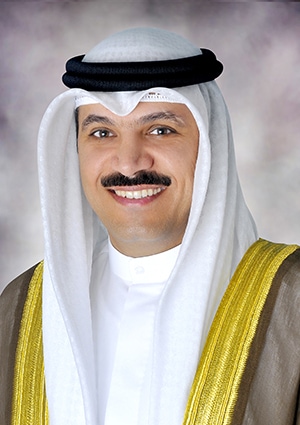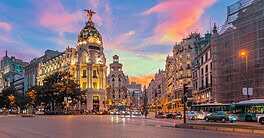Kuwait is keen to diversify its energy-centered economy. Foreign investment and market liberalization are definitely part of the formula.

Kuwait is back on track economically. After a historic and wrenching 3.5% contraction in GDP in 2017, due mainly to the global fall in oil prices, the tiny Persian Gulf emirate is poised to turn around with an uptick to 0.6% growth for 2019, according to International Monetary Fund (IMF) data; rising to 3.1% in 2020.
“Kuwait’s economy has continued to demonstrate resilience, notwithstanding a challenging economic environment,” says Mohammad Y. Al-Hashel, governor of the Central Bank of Kuwait (CBK).
To be sure, there are negative countercurrents: growing tensions between Iran and Saudi Arabia, an economic blockade of Qatar and a continuing war in Yemen. “The political situation in the region is affecting investments,” says Mohammad Al Duaij, CEO of Alea Global Group, a family-owned private equity and real estate investment conglomerate based in Kuwait City.
While Kuwait has absorbed the jolts from both falling oil prices and regional turmoil, these shocks have goaded the government to take up long-neglected reforms aimed at diversifying sources of growth. The IMF views the country as well-equipped to handle the changes. “Ample financial assets and low debt allow Kuwait to undertake the needed reforms from a position of strength,” the agency argues in its latest Article IV consultations on Kuwait.
Hydrocarbons remain the backbone of the economy; although their share of GDP has dropped to 55% from 61% in 2014, according Kuwait’s Central Statistics Bureau. Global oil prices will continue to determine growth, but other sectors are picking up. In 2019, non-oil revenue growth was 3%, with the IMF predicting 3.5% for 2020. Thanks mainly to a roster of mega-infrastructure projects, it is expected to increase by 4% year-over-year by 2021.
“Fortunately, in Kuwait we are used to being under pressure,” Al Duaij says. “Since the ’90s and the Iran-Iraq war, we have learned how to adapt to difficult situations. The country remains low-profile and stable, no matter the changes around us.”
Boosting FDI
Like all Gulf Cooperation Council (GCC) states, Kuwait has adopted a long-term national economic strategy, Vision 2035, aimed at moving the economy away from oil dependency and transforming the country into a regional commercial financial hub. The authorities are also looking to triple annual state revenues and cut public spending.
The Vision’s flagship project—Northern Gulf Gateway—will provide a boost of $220 billion and could attract an additional $230 billion in foreign investment, creating 300,000 to 400,000 knowledge-based jobs. It will include an education hub, a financial hub, a center for smart industry and a seaport linked to China’s Belt and Road Initiative. Kuwait hopes to include the private sector and foreign partners as much as possible through public-private partnerships (PPPs).
 Amico, Govern: Exchange privatization is not an automatic solution to attracting foreign investment and listings. |
To facilitate foreign direct investment (FDI), the government created a dedicated institution, the Kuwait Direct Investment Promotion Authority (KDIPA), in 2013. Kuwait has also passed laws allowing 100% foreign ownership of companies approved by the KDIPA and instituting tax holidays and customs exemptions. The fruits of these policies are $2.7 billion of incoming FDI that the KDIPA says it has overseen since commencing operation in early January 2015.
Aside from mega-infrastructure deals, Kuwait hopes to attract projects in retail, hospitality, healthcare, education and real estate. “There is a huge demand and very limited land,” says Alea Global’s Al Duaij. “Kuwait offers one of the highest returns for income-producing assets, around 7% to 8%; and one of the highest internal rates of return for development projects, around 35% to 40%.”
Deal financing in the emirate does not always follow a smooth or brisk path, however.
“Kuwaiti banks can participate in the large projects, and some banks even have the capacity to lead-manage them; but it takes generally longer than expected to get started,” says Michel Accad, Group CEO of Al Ahli Bank. “Unlike other countries in the region, Kuwait operates by consensus, with Parliament playing a big role in every bid. Foreign companies also often need a Kuwaiti joint-venture partner to win a tender; so when a venture gets awarded and other local players object, the project may be retendered altogether—and this is delaying the process.”
Kuwait is also opening up its bond market to foreign investors. Despite the Kuwait Investment Authority being among the world’s largest sovereign wealth fund—with almost $600 billion (430% of GDP) held in assets abroad—the state issued $8 billion in five- and 10-year bonds in 2017.
The debt issuance authorization expired in October of that year, putting new issues on hold; but that might change, as the government’s medium-term funding needs are expected to increase. Kuwait is in the process of drafting a new law allowing issuance of 30-year bonds. The new legislation would also let the country raise its debt ceiling from 10 billion to 25 billion Kuwaiti dinars ($32.9 billion to $82.4 billion) and allow the issuance of sovereign sukuk, or Islamic bonds.
Leaning on Banks
One of the pillars of this growth is a strong banking sector, composed of 23 banks, including 11 local lenders. Banks dominate the domestic financial sector, with $221 billion of assets in 2018, or 89% total disclosed financial assets, according to a September 2019 report from the CBK. They have also shown resilience in the face of the oil price decline, notching compound annual growth in assets of 4.7% from 2014 through 2018.
“The quality of credit in the overall banking sector has also been impressive, as the ratio of gross nonperforming loans to total loans has steadily declined from 2.9% in 2014 to a record-low level of 1.6% in 2018,” the CBK says in its latest report.
The banking sector’s profile is expected to continue growing, as lenders position themselves as key partners for infrastructure projects and PPPs. Vision 2035 also offers opportunities for banks to develop new corporate offers and credit facilities.
“The Vision is focused on the future of upcoming generations. Banks are aligned with it in developing services that cater to the young and creating job opportunities [for that] market,” says Adel Al-Majed, CEO of Boubyan Bank. “Furthermore, banks are acting within the CBK’s framework by focusing on supporting SMEs [small and medium-size enterprises], as Kuwait pins a lot of hope on this segment.”
According to the World Bank, SMEs made up only 3% of Kuwait’s GDP in 2016, when the global average in high-income economies was around 50%. To boost the sector, the authorities created a $7 billion SME fund in 2013, offering low-interest loans to small Kuwaiti-owned businesses. As large companies take up infrastructure projects, the reasoning goes, a network of small businesses will have to emerge around them. So far, however, SME growth has been marginal. Their share of overall bank lending was only 2.8% in 2018.
“The country needs a clearer strategy on SMEs,” says Al Ahli’s Accad. “Generally, Kuwaitis are relatively well off compared to others, and their funding needs are smaller. But entrepreneurs might need other things, such as financial advisory; and this may be where a government entity could also provide support, besides guaranteeing a portion of the SME loan so that the lending bank retains some skin in the game.”
Entrepreneurship could also take the form of startups fueled by innovation and new technologies. For now, however, Kuwait is still behind in the race with its GCC rivals. To boost fintech, the Central Bank is adopting regulations to promote one of the region’s first tech sandboxes.
Opening Financial Markets
Most Kuwaiti companies are family owned and refuse to sell shares to nonfamily members. But Kuwait’s stock exchange may be pushing them in a new direction soon.
 Al-Hashel, CBK: The economy continues to demonstrate resilience. |
In December, the initial public offering (IPO) of Boursa Kuwait—the second-largest exchange in the Gulf after Saudi Arabia’s Tadawul—marked a milestone: Half of the stock exchange was up for acquisition by local citizens. The offering was oversubscribed 8.5 times. The final phase of the IPO followed an earlier 44% sale to a consortium of international investors. Today, Boursa Kuwait is one of the only stock exchange operators in the Middle East that is not state owned.
“While there will be more freedom on operational choices, and potentially a positive impact on how innovative the market will be, exchange privatization is not an automatic solution to attracting foreign investment and listings,” says Alissa Amico, managing director of Govern, a research center specializing in economic and corporate governance. “Further thought will also be required on the regulatory division of responsibilities between the exchange and the CMA [Capital Markets Authority] in the new configuration.”
Despite these concerns, Kuwait is coming more fully into the sights of international investors. Last year, J.P. Morgan added Kuwait to its Emerging Market Bond Index. In 2018,Boursa Kuwait has joined the S&P Dow Jones and FTSE Russell emerging-markets indexes. The country’s reclassification as an emerging market by MSCI, anticipated next June, is expected to attract billions of dollars of inflows.
“By virtue of the upgrade, Kuwait will receive passive inflows; however, the question going forward for Kuwait—as indeed for other markets in the region—is what policymakers aim to do in order to encourage active inflows and new listings,” says Amico.
Kuwait is broadening the opportunities for greater foreign participation in its economy in the hopes of broadening its own economic foundations. Whether foreign investors will rise to meet those hopes remains to be seen.



